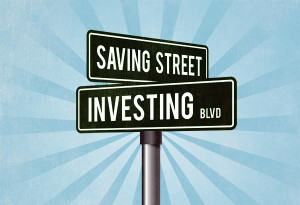 As we continue to look at a leader’s responsibility to take a proactive and intentional approach to managing their family’s finances, I want to state that I do not intend in this series to focus on the critical importance of eliminating financial debt. The crushing impact of adding the cost of servicing debt (i.e., interest) to the family budget has been well documented by many authors, counselors and commentators…most notably, Dave Ramsey. And actively and aggressively working to reduce and eliminate debt will have an even larger impact on the monthly budget in the short term. But it must be done. My assumption in this series of articles is that any necessary debt elimination is built into the family’s budget.
As we continue to look at a leader’s responsibility to take a proactive and intentional approach to managing their family’s finances, I want to state that I do not intend in this series to focus on the critical importance of eliminating financial debt. The crushing impact of adding the cost of servicing debt (i.e., interest) to the family budget has been well documented by many authors, counselors and commentators…most notably, Dave Ramsey. And actively and aggressively working to reduce and eliminate debt will have an even larger impact on the monthly budget in the short term. But it must be done. My assumption in this series of articles is that any necessary debt elimination is built into the family’s budget.
Another critical category of the family budget is Saving and Investing. When it comes to budgeting, most of a family’s monthly expenses are known and somewhat predictable. The rent or house payment are constant each month. Purchases of food and clothing can be controlled in most cases to remain within a preset spending limit. Although the electric bill can fluctuate greatly during different times of year, prior year usage can be a good predictor of what to expect in the future, so it also is predictable. However, car repairs, medical expenses for illness or injury, or a water heater that goes out (as mine recently did) are much harder to accurately predict. So the first type of Savings that must be built into the household budget is for emergencies and unpredicted expenses. Call it, as Dave Ramsey does, an emergency fund, or just call it good old boy scout advice to “be prepared”. Regardless, if you’re buying things you want but don’t need and not saving for unforeseen expenses, you are not managing your resources well.
 The second type of saving is for discretionary items that your family wants but cannot currently afford. It may be something big like a different car or a swimming pool, or something smaller like a TV or even a nice meal out. If you do not have the money to pay for it now, then you must save for it, within the context of your budget, and wait to purchase it until the full amount has been saved in order to avoid taking on debt.
The second type of saving is for discretionary items that your family wants but cannot currently afford. It may be something big like a different car or a swimming pool, or something smaller like a TV or even a nice meal out. If you do not have the money to pay for it now, then you must save for it, within the context of your budget, and wait to purchase it until the full amount has been saved in order to avoid taking on debt.
Slightly different than saving is Investing. The concept of saving is to put money aside until you have enough to do whatever it is that you are saving for. With investing, however, the primary goal is to gain a return on your money. The most common form of investing is in stocks, bonds, or mutual funds. However, investing can also be in the form of real estate, art, collectibles, a small business, or many other things. A key to help improve the chances of success are to invest in something you know about. If I were to invest in art, for example, I would be just as likely to purchase a drawing that failed a local elementary school art class as I would a work of the next great abstract artist! Investments often require a long horizon, and they often require substantial research and guidance from others. Accumulating money for retirement or for your children’s college expenses generally require investing and getting a (hopefully significant) return on your money.
A leader in the home needs to make sure that the family’s current needs are met by Budgeting and that its future needs are met by Saving and Investing. But does your family have a responsibility to use its financial resources for others as well? In my next post, I’ll talk about Giving.
Photo credit: Tax Credits / Foter / CC BY
Photo credit: ota_photos / Foter / CC BY-SA
Photo credit: LendingMemo / Foter / CC BY



Please note: I reserve the right to delete comments that are offensive or off-topic.